Karol Bagh Hanuman Mandir is one of the most iconic temples dedicated to Lord Hanuman. Commonly known as Jhandewalan Hanuman Mandir due to its proximity to the Jhandewala Metro Station, this temple stands out even among other famous historic sites like Kalkaji Temple.
This temple is frequently featured in TV shows and movies set in Delhi. The 108-foot-tall Lord Hanuman idol is impossible to miss and is clearly visible from the Blue Line metro route towards Dwarka.
Tuesdays are the busiest days here, as many devotees believe it is Lord Hanuman’s special day. During Hanuman Jayanti, Jhandewalan Hanuman Temple becomes one of the busiest temples in Delhi. Other festivals celebrated in a grand manner at this temple include Ram Navami, Shivaratri, Navaratri, and Janmashtami.
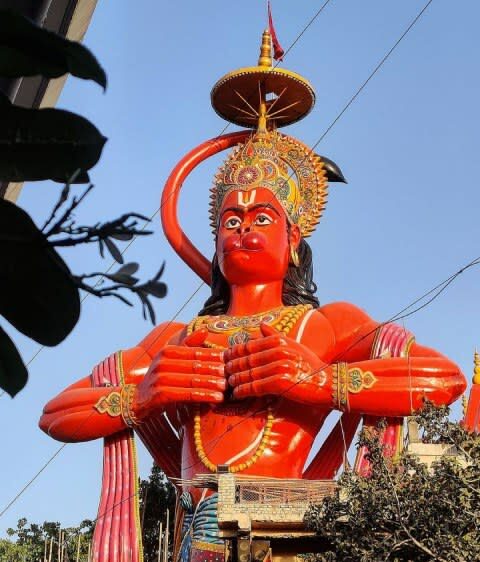
History of Karol Bagh Hanuman Mandir
According to legend, there used to be a small Hanuman idol and a vessel of sacred ash dedicated to Lord Shiva at this location. The late Mahant Nagababa Sevagir ji Maharaj often told his disciples that while performing penance, Lord Hanuman appeared to him in a dream, expressing a desire for a large statue of himself to be placed there. Inspired by this dream, he decided to construct the Hanuman Temple at this spot.
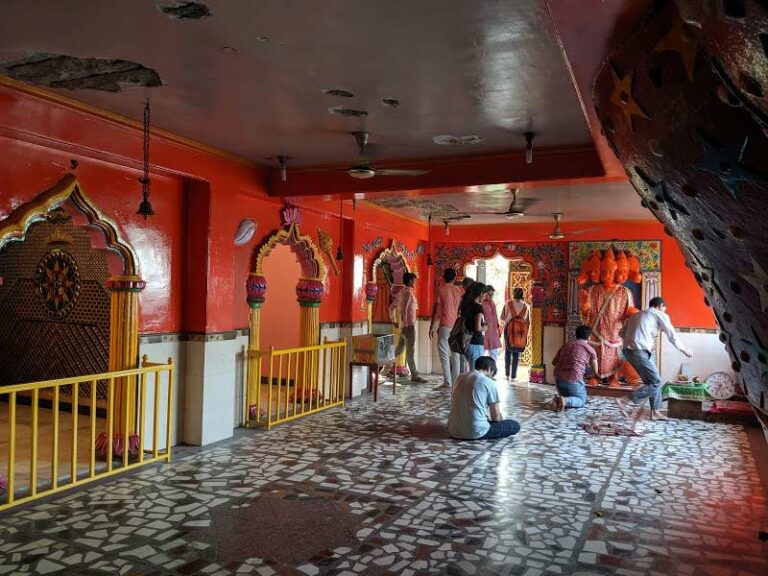
The temple’s construction began in 1994 and took about 13 years to complete. On March 30, 2006, Babaji brought the sacred flame from the Jwalaji temple in Kangra, Himachal Pradesh, which has been burning continuously since then.
The architecture of Karol Bagh Hanuman Mandir
Today, this temple is considered a marvel of art, engineering, and technology. The Karol Bagh Hanuman temple features a 108-foot-tall Lord Hanuman idol and a cave that replicates the Vaishno Devi Shrine in Jammu and Kashmir. This cave includes a holy rock called Pindi and a sacred stream resembling the river Ganga.
At the temple’s entrance, visitors are greeted by the open-mouthed depiction of a dying Rakshasa, symbolizing the demons Hanuman defeated. At the base of the statue, near the idol’s feet, there is a temple dedicated to Goddess Kali.
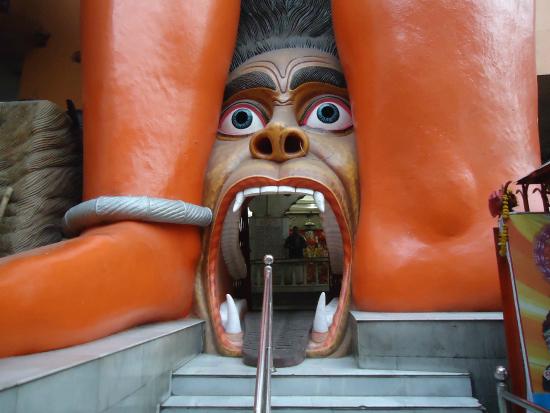
On Tuesdays and Saturdays, during the middle of the aarti, Hanuman’s arms, which are crossed over his chest, begin to move, revealing the images of Lord Shri Rama and Devi Sita in his heart, as described in the Ramayana.
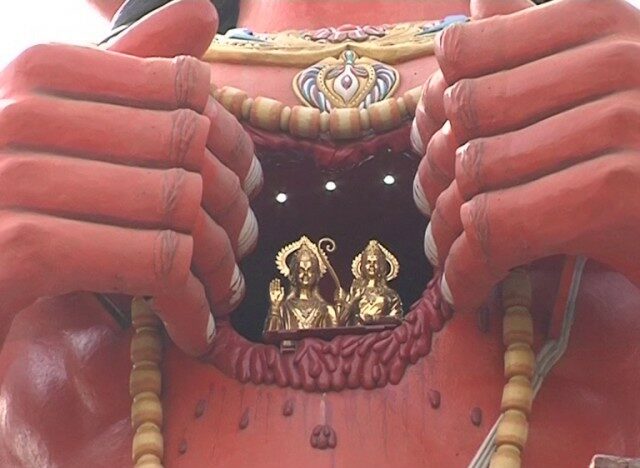
Significance of the Hanuman Temple in India
The entrance of the temple, resembling the open mouth of a dying monster, highlights Hanuman’s heroic acts in service to Lord Rama. Besides Lord Hanuman, the temple premises also feature idols of Shirdi’s Sai Baba, the Goddess of Dwarka, and Shani Maharaj.
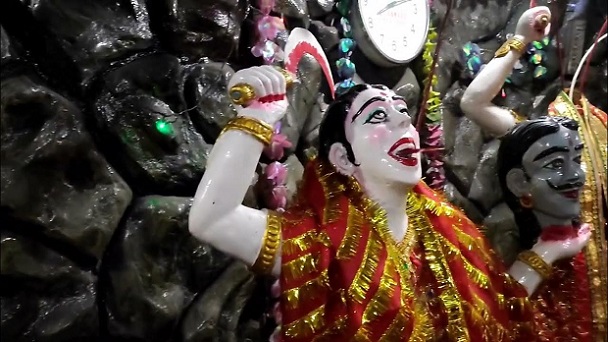
Devotees offer items like black cloth, knives, mustard oil, earthen lamps, jaggery, gram, horse beans, sesame seeds, flower garlands, and lemons to Lord Hanuman for protection and blessings.
Karol Bagh Hanuman Temple Location and Accessibility
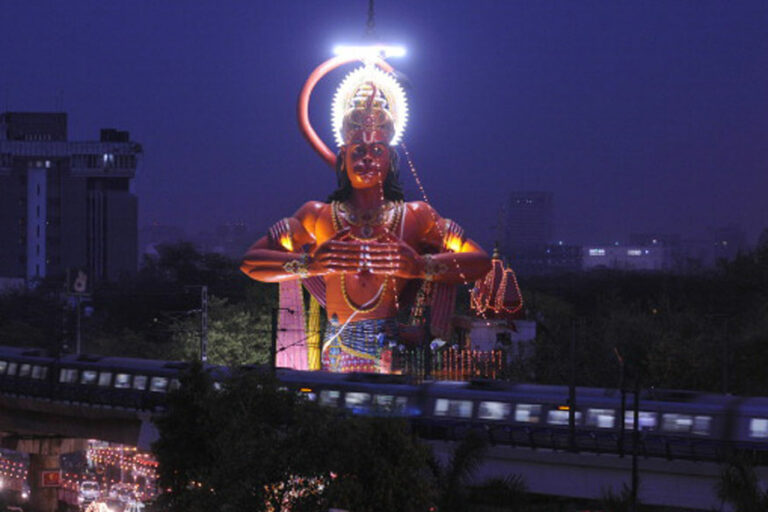
The Karol Bagh Hanuman Mandir is open daily from 6 a.m. to 10 p.m. The best days to visit are Tuesdays and Saturdays when visitors can witness Hanuman moving his hand from his chest, revealing Lord Rama and Goddess Sita during aarti.
The Karol Bagh Hanuman Mandir is located near the Jhandewalan Extension, close to the Jhandewalan Metro Station. The nearest metro stations are Jhandewalan Metro Station (140 m away) and Karol Bagh Metro Station (2 km away).
To reach Karol Bagh Hanuman Temple, visitors can take the metro to Jhandewalan or Karol Bagh Metro Station and walk or take a taxi or auto-rickshaw to the temple.
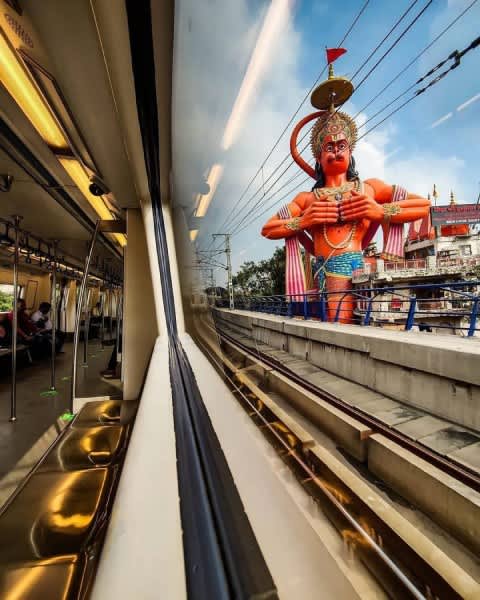
Jhandewalan Hanuman Mandir Society
Karol Bagh Hanuman Mandir is one of the most iconic symbols of New Delhi. In addition to its spiritual significance, Jhandewalan Hanuman Temple is a must-visit tourist attraction in Delhi.